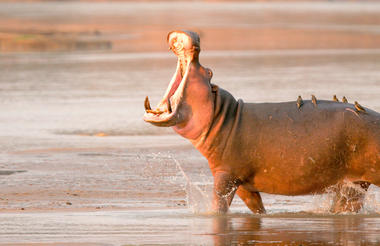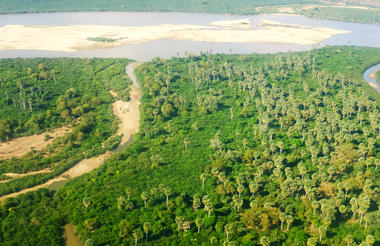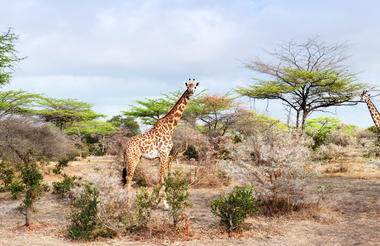Spread across the Eastern Arc Mountains, Tanzania’s Udzungwa Mountains National Park boasts a diverse range of natural habitats including tropical rainforest, mountain forest, miombo woodland, grassland and steppe. This vast expanse of unspoiled wilderness serves as a habitat for over 400 animal species. These include, among others: elephant, buffalo, lion, leopard, African wild dog, six different species of primate, and a variety of birdlife. Tourism is centred around hiking as the park is only accessible on foot. The most common walk is the Sanje Waterfalls trail which takes around four hours to complete and allows visitors to swim in the refreshing plunge pools at the bottom of this impressive 170-metre waterfall. The incredible diversity of tropical flora and fauna species has earned the park recognition as an Ecoregion of Global Critical Importance by the World Wildlife Fund, as well as a World Biodiversity Hotspot.



Following its 2008 merger with Usangu Game Reserve and other notable wetlands, Ruaha is counted among Tanzania's biggest national parks, spanning more than 20,000km². It is also a sizeable elephant haven and home to buffalo, huge populations of lion, leopard, and a profusion of bird species, including kingfishers, plovers, egrets, hornbills and sunbirds. Crocodiles and hippos thrive in the Great Ruaha River, which flows along the sanctuary’s eastern border and in the dry season between July and November, animals flock to the last remaining water sources, presenting an exceptional wildlife spectacle. There are a number of accommodation options available but some close for the wet season in March and April.



Situated just 300 kilometres from the capital, Mikumi is Tanzania’s fourth-largest park and one of its most accessible national parks. The landscape is characterised by low-lying wetlands flanked by mountains on either side. Diverse wildlife inhabits the park’s 3230-square-kilometre area, including lion, buffalo, buck, civet, crocodile, snake, lizard, hippo, zebra and even packs of wild dogs, which are seldom seen in other parts of the continent. The floodplain also supports over 400 species of bird, both resident and migratory species. Visitors can look forward to various activities including wildlife viewing, bird watching, visiting the educational and research centre, and viewing the massive collection of baobabs near Mbuyuni.
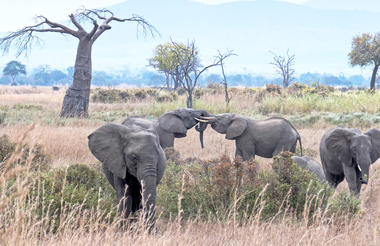
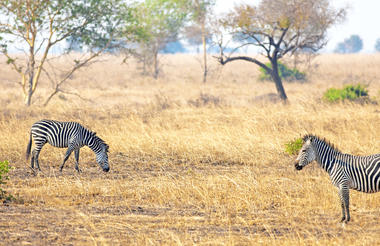

Formerly the northern part of Selous Game Reserve, Nyerere National Park is Tanzania's largest National Park. Stretching over an impressive 30,893 square kilometres, the park is home to some of the world’s largest concentrations of wildlife, and the incredible diversity and sheer volume of animals draw visitors from around the globe. Travellers can look forward to spotting a wide collection of common and rare species including the famous Big Five, some rare species of antelopes like Roan Antelope, and large concentrations of elephant and hippos. Don’t miss the opportunity to take a boating safari on the exquisite Rufiji River, spot the endangered African wild dog, and enjoy a guided walking safari with a highly knowledgeable guide.
